BRIGHT CHINESE CAMP SITE
14-20 DELANY AVENUE BRIGHT, ALPINE SHIRE
-
Add to tour
You must log in to do that.
-
Share
-
Shortlist place
You must log in to do that.
- Download report


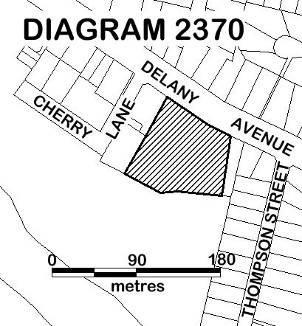
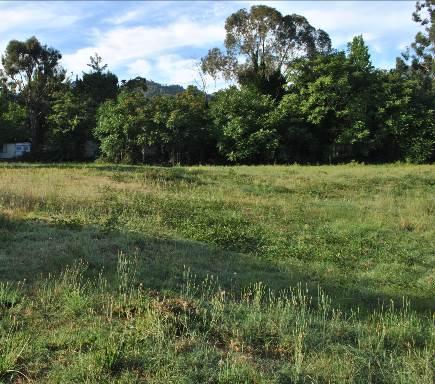
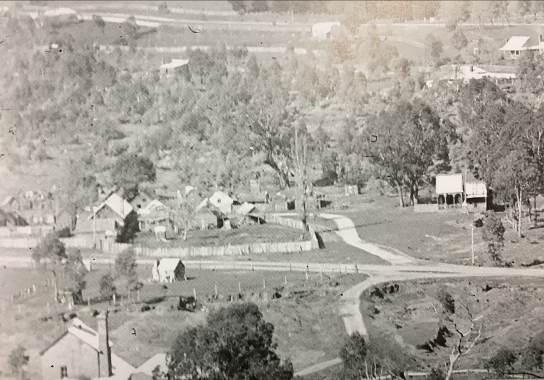
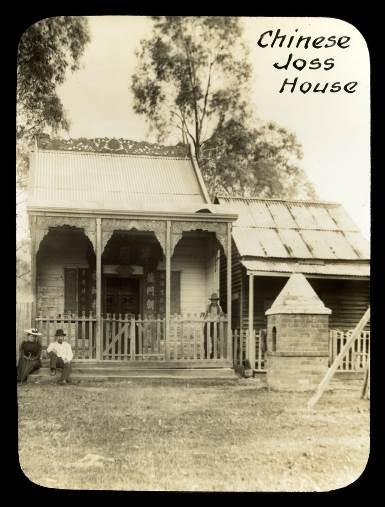
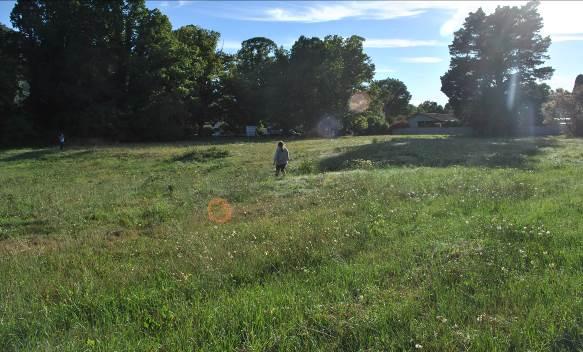
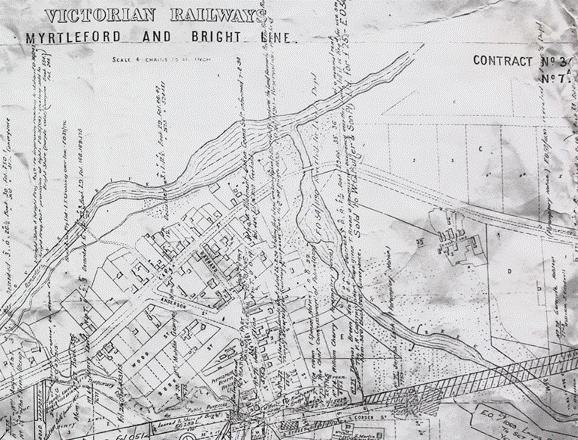

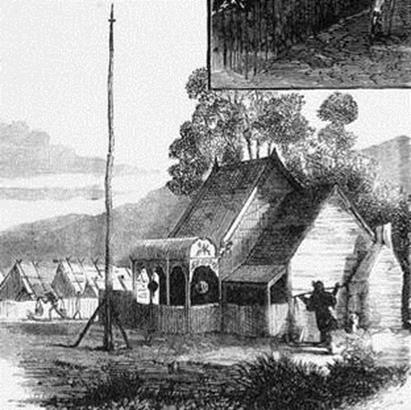
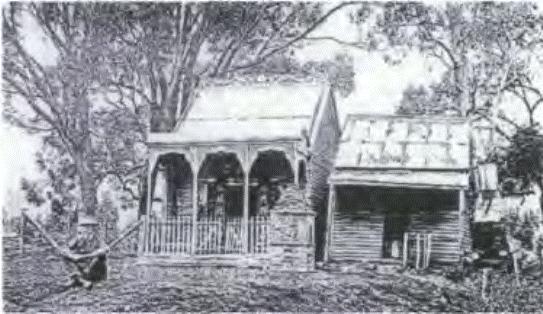
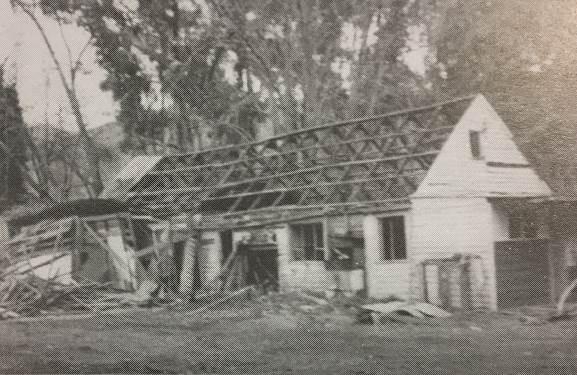
Statement of Significance
What is significant?
How is it significant?
Why is it significant?
-
-
BRIGHT CHINESE CAMP SITE - History
Nineteenth Century Gold Rushes
In 1851, the new Colony of Victoria became one of a number of places throughout the world where gold was discovered. Gold rushes took place in America, Australia, New Zealand and South Africa and caused a major shift in the balance of European and Chinese populations in the Pacific and Indian Ocean rim regions. Unlike previous mining events which were controlled, funded and managed by private companies, gold rushes were created by tens of thousands of individuals, all following the promise of gold.
In the initial years, only simple but labour-intensive processes and technologies were necessary to mine for gold. Any able individual or cooperative party could participate and the gold discovered could be directly converted to cash. These factors made the nineteenth century gold rushes huge mass immigration events, involving all classes of society enticed by the apparent economic and social advantages.
The world's two first gold rushes, in California (1848-53) and Victoria (1851-1855), made gold a powerful force in world affairs. These two goldfields significantly increased the world's annual gold output with Australia producing 38 per cent and America 41 per cent of the world's gold during the rush period.
The early goldfields of Ballarat, Castlemaine, Bendigo and Beechworth in particular were extremely rich and proved to be very influential in terms of production and immigration. Before the gold rush, Victoria had a population of approximately 75,000. By 1860, it had more than 520,000 people, making up nearly half of Australia's population.
Chinese gold seekers
The first immigrant gold miners arrived in Victoria in 1851, mainly from the United Kingdom. From 1853 immigrants also began arriving from China. By 1859 more than 45,000 (almost all male) Chinese had arrived, making them the second largest majority on the goldfields, and accounting for around 20 per cent of the adult male population of Victoria. They arrived mainly from the Guangdong province in southern China and were motivated to leave their home country by severe conditions of poverty due to civil war.
Chinese immigration came at a period when the populations on the established Victorian goldfields were large but returns were declining as the shallow diggings became less profitable. European miners objected to this new competition and called for controlling measures. Many also reacted violently and attempts were made to forcibly expel the Chinese from the fields. To maintain their safety the Chinese not only travelled in large groups, but also lived in unofficial segregated camps.
The Victorian government was also concerned about the increasing numbers of Chinese arrivals and introduced the Immigration Restriction Act in 1855 which imposed a £10 head tax on Chinese immigrants arriving at Victorian ports. To avoid this (and to continue to profit from the influx of Chinese) ships sailed to Robe in South Australia instead, from where many thousands of Chinese travelled on foot to the Victorian goldfields. In the same year, the government also established a Chinese Protectorate system. A pilot protectorate and the formalisation of seven Chinese villages was introduced at Bendigo in May, and in October the system was expanded, with protectors appointed at Ballarat, Avoca and Castlemaine. In response to the Buckland Riot of 1857, the system became even more formalised.
Gold rushes to north east Victoria - the Ovens Goldfield
Gold rushes to north east Victoria (known as the Ovens Goldfield) commenced in 1852 with the first rush occurring at Beechworth. Mining in this area relied on water, and long water races and deep tailraces were constructed in all parts of the goldfield.
In the mid 1850s, Beechworth had a small population of about sixty Chinese. By 1857, the wider Ovens Goldfield (including Bright) had a Chinese population of approximately 7,000, with the largest encampment at Beechworth.
By 1868 this number had reduced to approximately 3,000 to 4,000 Chinese, many working for themselves and some employed on European claims. Others were employed in harvesting and sheep shearing and as market gardeners, while others worked in businesses and trades. By the late 1870s, there were few Chinese working on the Ovens gold fields with most working seasonally on tobacco plantations and hop farms in the Ovens and Buffalo valleys.
Bright Chinese Camp
Gold mining began in the area of Bright (known as the Upper Ovens mining region) when miners rushed the Buckland River in 1853-4. This was followed by discoveries of gold nearby, including Morses Creek (Bright) and Growler's Creek (Wandiligong).
In 1857, the Buckland River was the scene of a notorious anti-Chinese riot, said to be the 'most disgraceful of the Victorian riots'. Several Chinese were murdered and the riot displaced Chinese miners who took refuge in other camps.
As Bright rapidly expanded, the Chinese were again subjected to violence, and on April 29 1859 they were driven from their claims. One Chinese was bludgeoned to death, and another severely injured, in what became known as the Morses Creek Affray. Following this, Warden Dowling was instructed to lay out a camp for the Chinese Miners at Bright, which he did in July 1859. Men in the camp were put under the protection of Mr Drummond, the local Chinese Protector.
The Bright Chinese Camp was home to most of the 1,200 to 1,400 Chinese men on the Upper Ovens River at the time. Over the years, the camp supported stores, a Chinese temple or Joss House, hotel, cook shops, gambling dens and lottery houses, boot maker, opium dens, a Presbyterian church, and even a Chinese circus in the early 1860s.
The Bright Chinese Camp flourished during the 1860s, when statistics indicated that the Bright area had the highest Chinese population of any of the mining places in Victoria. The camp slowly deteriorated during the late nineteenth century, and in 1910, the licence on Quan Kee's Chinese Hotel, the last operational business at the Camp, was surrendered. This license had been held by Hung Fee who had initially applied for it in 1892. However on rejection of his application for naturalisation, the license was transferred to his wife, Elizabeth. Elizabeth died in 1893 and it is likely that the license was then transferred to her husband. The Hung Fees had five children, and the last resident of the camp was one of their daughters, Miss Humphries, who had anglicised her name. Very little is known about her, but she is thought to have died in the 1970s, at which time the hotel was demolished. All other structures were demolished in 1982 and the land has remained vacant since that time.
Key references
Rob Kaufman & Andrew Swift (2005) The Chinese Camp, Bright
LRGM Services (2004) Thematic Environmental History of the Alpine Shire
Macgregor, Paul (2012) "Lowe Kong Meng and Chinese Engagement in the International Trade of Colonial Victoria " Provenance 11 (http://prov.vic.gov.au/publications/provenance/lowe-kong-meng)
Macgregor, Paul "A Trade in Chinese Men and Supplies: Lowe Kong Meng and the organisation of the Chinese gold rush in Otago", in Lloyd Carpenter and Lyndon Fraser (eds), Rushing for Gold: Life and Commerce on the Goldfields of New Zealand and Australia, Otago University Press, Dunedin, NZ, 2016.
Diann Talbot (2016) Who is she? Layout Speciality Press
BRIGHT CHINESE CAMP SITE - Plaque Citation
The Bright Chinese Camp was established on this site in 1859 by the Victorian Government to protect the residents from anti-Chinese violence. It included stores, a Joss House, gambling and opium dens, boot maker, Presbyterian church, and a Chinese circus.
BRIGHT CHINESE CAMP SITE - Assessment Against Criteria
Criterion
The Bright Chinese Camp is historically significant for its association with the development of Victoria through the discovery of gold. The Chinese immigrants who arrived in the goldfields during the 1850s and 1860s were part of the first mass emigration from China. By 1859, there were 46,000 Chinese immigrants in Victoria, making up nine per cent of Victoria's entire population and as the second largest immigrant group on the goldfields, they played a significant role in the history of gold mining in Victoria. As one of the camps created as part of a system of Chinese protectorates and segregated Chinese camps, the establishment of the Bright Chinese Camp in 1859 also demonstrates the Victorian Government's response to the hostility and violence directed towards the Chinese during the 1850s and 1860s. Once established, the Bright Chinese Camp continued to flourish, with statistics indicating that the Bright area had the highest Chinese population of any of the mining places in Victoria during the 1860s. [
Criterion A]
The Bright Chinese Camp is a rare example of a nineteenth century Chinese camp where there is a very high likelihood that the sub-surface archaeological record has survived undisturbed. There are few, if any, Chinese related archaeological sites of comparable condition, size and significance in Victoria. Most, if not all other Chinese camps in Victoria have been substantially disturbed through ongoing mining activity, excavation or development. [
Criterion B]
The Bright Chinese Camp is of archaeological significance and has the potential to be most intact archaeological place of its kind in Victoria. The Bright Chinese Camp was one of the largest and most important Chinese camps in Victoria, comparable to those at Bendigo, Ballarat, Castlemaine and Beechworth, all of which have been subjected to redevelopment. There is a very high likelihood that that the Bright Chinese Camp contains archaeological material that will provide information about the construction, use and abandonment of the place by the Chinese during the latter half of the nineteenth century, thereby shedding new light on the development of segregated Chinese camps across Victoria. [
Criterion C]
BRIGHT CHINESE CAMP SITE - Permit Exemptions
General Exemptions:General exemptions apply to all places and objects included in the Victorian Heritage Register (VHR). General exemptions have been designed to allow everyday activities, maintenance and changes to your property, which don’t harm its cultural heritage significance, to proceed without the need to obtain approvals under the Heritage Act 2017.Places of worship: In some circumstances, you can alter a place of worship to accommodate religious practices without a permit, but you must notify the Executive Director of Heritage Victoria before you start the works or activities at least 20 business days before the works or activities are to commence.Subdivision/consolidation: Permit exemptions exist for some subdivisions and consolidations. If the subdivision or consolidation is in accordance with a planning permit granted under Part 4 of the Planning and Environment Act 1987 and the application for the planning permit was referred to the Executive Director of Heritage Victoria as a determining referral authority, a permit is not required.Specific exemptions may also apply to your registered place or object. If applicable, these are listed below. Specific exemptions are tailored to the conservation and management needs of an individual registered place or object and set out works and activities that are exempt from the requirements of a permit. Specific exemptions prevail if they conflict with general exemptions. Find out more about heritage permit exemptions here.Specific Exemptions:It should be noted that Permit Exemptions can be granted at the time of registration (under s.42(4) of the Heritage Act). Permit Exemptions can also be applied for and granted after registration (under s.66 of the Heritage Act)
General Condition 1
All exempted alterations are to be planned and carried out in a manner which prevents damage to the fabric of the registered place or object.
General Condition 2
Should it become apparent during further inspection or the carrying out of works that original or previously hidden or inaccessible details of the place or object are revealed which relate to the significance of the place, then the exemption covering such works shall cease and Heritage Victoria shall be notified as soon as possible.
General Condition 3
All ground disturbing works should be informed by an Archaeological Management Plan prepared for the place. The Executive Director is not bound by any Archaeological Management Plan, and permits still must be obtained for works suggested in any Archaeological Management Plan.
General Condition 4
Nothing in this determination prevents the Heritage Council from amending or rescinding all or any of the permit exemptions.
General Condition 5
Nothing in this determination exempts owners or their agents from the responsibility to seek relevant planning or building permits from the relevant responsible authority, where applicable.
Specific Permit Exemptions
The following works may be undertaken provided they do not involve the disturbance, removal or destruction of any above-ground landscape or archaeological features or sub-surface archaeological artefacts, features or deposits.
. Landscape maintenance works.
. Fire suppression and fire-fighting duties.
. Weed and vermin control activities
. Removal of plants listed as noxious weeds in the Catchment and Land Protection Act 1994.
. Installation and removal of safety signage of a modest size.
BRIGHT CHINESE CAMP SITE - Permit Exemption Policy
Preamble
The purpose of the Permit Policy is to assist when considering or making decisions regarding works to a registered place. It is recommended that any proposed works be discussed with an officer of Heritage Victoria prior to making a permit application. Discussing proposed works will assist in answering questions the owner may have and aid any decisions regarding works to the place.
The extent of registration of Bright Chinese Camp in the Victorian Heritage Register affects the whole place shown on Diagram 2370 including the land, landscape elements, sub-surface deposits and material cultural heritage. Under the Heritage Act 1995 a person must not remove or demolish, damage or despoil, develop or alter or excavate, relocate or disturb the position of any part of a registered place or object without approval. It is acknowledged, however, that alterations and other works may be required to keep places and objects in good repair and adapt them for use into the future.
If a person wishes to undertake works or activities in relation to a registered place or registered object, they must apply to the Executive Director, Heritage Victoria for a permit. The purpose of a permit is to enable appropriate change to a place and to effectively manage adverse impacts on the cultural heritage significance of a place as a consequence of change. If an owner is uncertain whether a heritage permit is required, it is recommended that Heritage Victoria be contacted.
Permits are required for anything which alters the place or object, unless a permit exemption is granted. Permit exemptions usually cover routine maintenance and upkeep issues faced by owners as well as minor works or works to the elements of the place or object that are not significant. They may include appropriate works that are specified in an Archaeological Management Plan. Permit exemptions can be granted at the time of registration (under s.42 of the Heritage Act) or after registration (under s.66 of the Heritage Act).
It should be noted that the addition of new buildings to the registered place requires a permit, unless a specific permit exemption is granted.
Conservation management plans
It is recommended that an Archaeological Management Plan is developed to manage the place in a manner which respects its cultural heritage significance.
Aboriginal cultural heritage
If any Aboriginal cultural heritage is discovered or exposed at any time it is necessary to immediately contact Aboriginal Victoria to ascertain any requirements under the Aboriginal Heritage Act 2006 .
Other approvals
Please be aware that approval from other authorities (such as local government) may be required to undertake works.
Archaeology
Ground disturbance may affect the archaeological significance of the place and, subject to the exemptions stated in this document, requires a permit.
Cultural heritage significance
Overview of significance
The cultural heritage significance of the Bright Chinese Camp lies in the land which is likely to possess a remarkable undisturbed and extensive archaeological record of Chinese culture and the contribution this has made to the history of Victoria. The place has the potential to provide information regarding traditional construction methods and the material culture of daily lives of Chinese immigrants on the gold fields.
-
-
-
-
-
BRIGHT COURT HOUSE AND LOCKUP
 Victorian Heritage Register H1921
Victorian Heritage Register H1921 -
STAR BRIDGE
 Victorian Heritage Inventory
Victorian Heritage Inventory -
BRIGHT CEMETERY
 Victorian Heritage Inventory
Victorian Heritage Inventory
-
'Altona' Homestead (Formerly 'Laverton' Homestead) and Logan Reserve
 Hobsons Bay City
Hobsons Bay City
-
-











